Equine Oral Examination and Treatment
For centuries, people who had horses knew the worth of caring for their animal’s teeth. Historically, the better the horse’s dentition, the more horse had importance. If we fast forward to today, we do not compromise the dental health of the horse with their price or importance. Oral problems in horses can affect their athletic performance. It can also influence their life.
Equine Teeth
Like human, horses also have two sets of teeth; one is deciduous teeth or milk teeth and the other one is permanent teeth. The deciduous teeth erupt at 6 months of age and start to be replaced by adult teeth around 2-1/2. At the age of 5, most horses have their full permanent
teeth.
- An adult horse has up to 44 permanent teeth including canines
- A mare may have 36 to 44 permanent teeth. Normally a mare does not have canines.
Dental Problems, Indications & their Treatments
It is very important to diagnose dental problems early, waiting too long may increase the treatment needed or may even make remedy impossible. The horse’s teeth can be divided into two main types;
- The incisors at the front which nip and tear the grass.
- Premolars and molars which grind the food down into a digestible size before swallowing.
Premolar and molar problems
Sharp enamel points Sharp edges known as enamel points naturally develop as the horses teeth erupt. These sharp enamel points cause soreness, lacerations and ulcers to the sides of the cheeks and to the tongue. Normally horses with sores due to these sharp points will find it painful to chew and they give up and spit out a half chewed food. This is called quitting and is a common occurrence. With proper dental care and treatment this problem can be avoided.
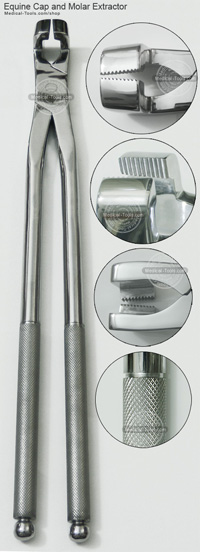 |
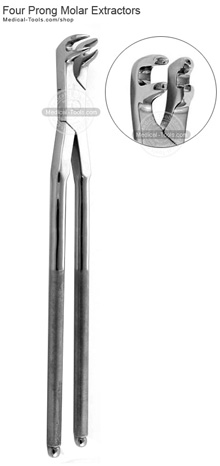 |
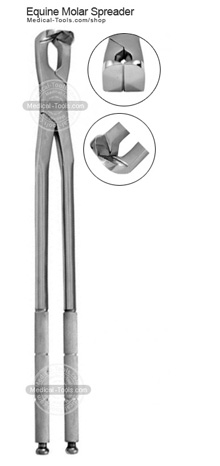 |
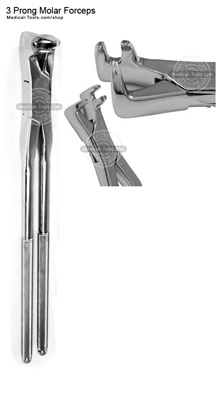 |
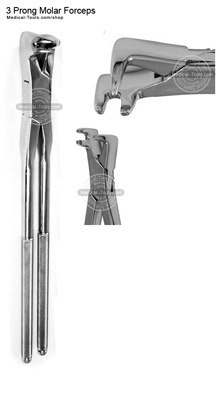 |
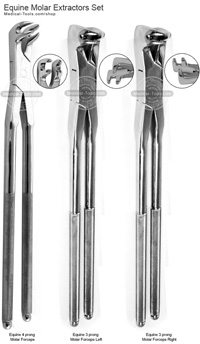 |
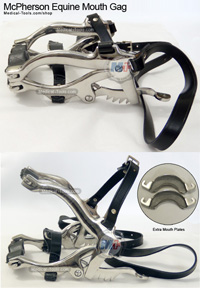 |
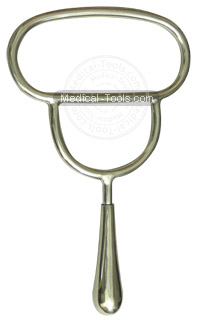 |
Deciduous Teeth problems
Deciduous teeth are also known as caps. Normally adult horses have problems shedding the deciduous teeth which can be painful causing quidding, and difficulty masticating, and can lead to bad habits like head tossing. Caps break in half because they have trouble being pushed clear by the erupting permanent pre-molar. This may cause them to become retained and infected leading to a foul smelling odor. Between the ages of 2-1/2yrs and 5yrs it is very important, the horse should be examined every six months by a dentition.
Wolf teeth Problems
Usually they are short crowned with a root two to three times the length of the crown. These small conical teeth often interfere with the bit and as a result they are removed. This is just because of the position of the tooth, which is normally at the front of the molar arcades on the maxilla (upper jaw) and occasionally on the mandible (lower jaw).
Ramps
Ramped molars are same as hooks but have a better slope to the tooth and can also be on the front or back, upper or lower molars. Ramps can create problems to the molar arcades alignment and exerts pressure on the temporal mandibular joint that may cause headaches for the equine.
Hooks
These develop due to the unsettlement of the molar arcades. This is normally because of an over-bite or under-bite (parrot mouth or sow mouth). The part of tooth which is not in any contact will erupt and get more and more pronounced. and the hooks will get bigger with the passage of time. Large hooks will cause discomfort, weight loss, choke and colic.
Excessive Transverse Ridges
These are very important for the horse to chew and break down food into a digestible size. If these ridges become too exaggerated then their reduction will be important to a normal level, which may need to be reduced on two or three different occasions.
Steps
This occurs when the clinical crown of one cheek tooth is larger than those in the rest of the arcade. A step in the molar arcade will resist the lateral excursion, and anterior/ posterior motion of the mandible. The step has to be reduced after six months tenure through burring and floating so that it doesn’t affect the horse.
Shear Mouth
A shear mouth occurs when the horse is using only one side of its mouth to chew its food. It will often cause an incisor slant as well. This is a rare dental condition, and work to the incisors as well as the cheek teeth is required to improve the malocclusion.
Wave Mouth
This problem usually occurs due to lack of dental attention as a young horse, which are slow in eruption of caps. Wave mouths can be difficult to correct completely in older horses. However most can be correct in younger horses with a regular maintenance of 6 months.
Diseased and infected teeth
Teeth can become infected due to trauma, abnormal wear over a long period of time. Chronic infection of the teeth can cause general health problems, and can also cause infections of the sinus. Caries can sometimes be difficult to see properly but with the use of a good quality headlight and dental mirror this becomes easier.
Displaced and rotated cheek teeth
This is often due to overcrowding of the cheek teeth arcades. Periodontal pocketing around these displaced or rotated teeth is normal, and they may also produce ulcers on the tongue or cheeks. This can be very painful condition. Sometimes displaced cheek teeth may require extracting, so by removal of sharp edges will stop, damaging tissues and causing ulcers.
Diastema
A diastema is a space between two teeth. These diastemas can be very painful and normally cause quidding and foul smelling breath. At this time, picking out these diastemas and flushing out the area with high pressure air and water, or in some cases widening the cavity seems to be the best treatment plan.
Supernumerary Teeth
Supernumerary teeth are rare in horses but can cause problems. It is very important that the overgrowths are reduced at least twice or three times a year.
Incisor Problems
The incisor teeth are found at the front of the mouth and are used for nipping the grass. Normally a horse has a set of twelve deciduous incisors, which are replaced by twelve permanent incisors. One of the main dental problems occurs in the common horse due to the lack of continuous grazing.
Ventral Curvature (smile)
When the incisors are looking like a curve from both sides then it is viewed as a smile. The problem with a smile, is that the incisors cam off each other and force the cheek teeth apart too early. The problem can be corrected by using power work again, or in a mild case by using hand float, although the table angles in the cheek teeth can also
be corrected by hand.
Slant (diagonal bite)
when looking from front, incisors should look horizontal. Due to this problem the horse has upper incisors which are too long to meet lower incisors which are too short on one side of the mouth and on the other side the problem is reversed. This problem can be overcome by power work.
Dorsal Curvature (frown)
It is the opposite of a smile but causes the same problems. It can also be tackled by power work.
Missing Tooth
If a horse does not have a permanent incisor or has a damaged incisor then a problem is found over there. The problem is that the opposite incisor will grow in the gap and causes a blockage. The horse with this problem will be in the condition of quidding. The remedy is to reduce the overlong incisor using either a diamond disc cutter, or carbide burr. In this condition the horse will almost need regular attention.
Overbite
It looks like a parrot mouth. In most cases a method known as an “incisor reduction” and corrective floating, is done to maintain anterior-posterior motion of the jaw, and to decrease pressure that this exerts on the Tempro-mandibular joint.
Underbite
It looks like a sow mouth. Again the most preferable method to tackle this problem is an “incisor reduction” and corrective floating, which has the similar influence on the tempro-mandibular joint.


